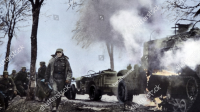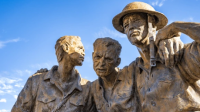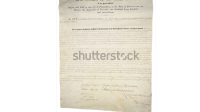Introduction to the American Revolutionary War
The American Revolutionary War was a pivotal period in history, marked by the struggle for independence from British rule. Among the most significant events were the battles of Lexington and Concord in 1775, which ignited the Revolutionary War and set the stage for the birth of a new nation. These battles represented the culmination of growing tensions between the American colonies and the British government, tensions that had been building for years due to unfair taxation and lack of representation.
Understanding the events of Lexington and Concord is crucial for comprehending the larger context of the American Revolutionary War. These initial confrontations set the tone for the conflict that followed and illustrated the determination and resilience of the colonial militias. They were not just isolated skirmishes but rather the spark that ignited a widespread revolutionary movement.
What Happened at Lexington and Concord in 1775?
The battles of Lexington and Concord marked the beginning of open armed conflict between Great Britain and its thirteen American colonies. These initial clashes were crucial in setting the stage for the Revolutionary War, galvanizing colonial resistance and leading to the formation of the Continental Army. The events of April 19, 1775, are often seen as the catalyst that turned colonial dissent into a full-scale war for independence.
Understanding the sequence of events that led to the battles and their immediate aftermath helps to grasp the significance of these confrontations. From the midnight ride of Paul Revere to the retreat of British troops to Boston, each moment played a crucial role in the larger narrative of the American Revolutionary War. Let’s delve deeper into these key moments to better appreciate their impact.
The Build-Up to the Battles
The battles of Lexington and Concord did not occur in a vacuum. They were the result of years of escalating tensions and conflicts between the American colonists and the British authorities. This period saw significant resistance from the colonies against various British policies and acts, such as the Stamp Act and the Townshend Acts, which imposed taxes without colonial representation. These policies were seen as direct affronts to the autonomy and rights of the colonists, leading to widespread dissent and protests.
The situation reached a boiling point as the British government attempted to clamp down on the increasingly defiant colonies. The Massachusetts Bay Colony, in particular, became a hotbed of revolutionary activity. It was here that the first sparks of open rebellion began to fly, as local militias, known as the Patriot forces, started to organize and prepare for the inevitable conflict. The build-up to Lexington and Concord was marked by a series of provocations and counter-provocations, each side testing the other’s resolve.
Colonial Resistance and British Tensions
The Lexington and Concord battles were a direct result of escalating tensions between the American colonists and British authorities. Years of colonial resistance to British policies, such as the Stamp Act and the Townshend Acts, had created a volatile environment. The British government’s attempts to exert control over the colonies met with increasing opposition, leading to a full-blown Revolutionary War.
The colonists’ anger and frustration were palpable. They felt that their rights as Englishmen were being systematically eroded by a distant and indifferent government. This sense of injustice fueled a growing movement towards independence, and the colonies began to see themselves not just as British subjects, but as a separate entity with its own identity and destiny. The British response to this rising dissent was often harsh, with measures designed to punish and subdue the colonies, further inflaming tensions and pushing the two sides closer to open conflict.
The Role of the Massachusetts Bay Colony
The Massachusetts Bay Colony played a crucial role in the events leading up to the battles. As a center of colonial dissent, it became a focal point for British efforts to suppress the rebellion. The Patriot forces in Massachusetts were well-organized and prepared to defend their rights.
The colony’s strategic importance was not lost on either side. For the British, maintaining control over Massachusetts was essential to keeping the rest of the colonies in check. For the colonists, it was a symbol of their struggle for freedom and a rallying point for their resistance. This dynamic set the stage for the inevitable clash at Lexington and Concord. The efforts to secure and defend Massachusetts showcased the determination and resilience of the colonial forces, foreshadowing the larger conflict that was about to unfold.
Paul Revere’s Midnight Ride
Before the battles of Lexington and Concord, a critical event occurred that helped the colonists prepare for the British advance. Paul Revere’s midnight ride is one of the most celebrated moments in American history. On the night of April 18, 1775, Revere, along with William Dawes and Samuel Prescott, rode through the countryside to warn the colonial militias that British troops were on their way to seize colonial arms stored at Concord.
This midnight ride was not just a daring adventure but a well-coordinated effort that demonstrated the effective communication networks established by the colonists. The warnings delivered by Revere and his fellow riders allowed the colonial militias to mobilize quickly and prepare for the impending British attack. This rapid response was crucial in ensuring that the colonists were not caught off guard. The ride became an iconic moment of unity and vigilance, symbolizing the widespread commitment to the cause of independence.
A Warning to the Colonists
One of the most famous episodes preceding the battles was Paul Revere’s midnight ride. Revere, along with other riders like William Dawes, alerted the colonial militias of the approaching British troops. This warning allowed the Patriot forces to mobilize and prepare for the impending confrontation.
The significance of Revere’s ride cannot be overstated. It exemplified the resourcefulness and determination of the colonists to resist British tyranny. The ride also showcased the sense of urgency and solidarity among the colonists, as news of the British advance spread rapidly through the network of riders and messengers. This early warning system was instrumental in the successful mobilization of the colonial militias, ensuring that they were ready to meet the British forces head-on.
The Importance of the Ride
Paul Revere’s ride is often romanticized in American history, but its importance cannot be overstated. The ability of the colonial militias to respond quickly to the British advance was a key factor in their initial success. The ride exemplified the colonial resistance and the determination to fight for independence.
Revere’s ride also highlighted the strategic use of intelligence and communication by the colonial forces. It was a testament to their organizational skills and their commitment to the cause of liberty. This early warning system allowed the colonists to gain a critical advantage, setting the stage for the battles that would follow. The successful execution of the ride demonstrated the preparedness and resolve of the colonial militias, inspiring confidence and unity among the Patriots.
The Battle of Lexington
The Battle of Lexington is widely recognized as the first military engagement of the American Revolutionary War. On the morning of April 19, 1775, the British troops, under the command of Major John Pitcairn, encountered a small group of colonial militia in the town of Lexington, Massachusetts. This confrontation, though brief, marked the beginning of the armed conflict between Great Britain and its American colonies.
The battle was significant not just for the shots that were fired but for what it represented—a direct challenge to British authority. The colonial militias, often referred to as Minutemen due to their readiness to fight at a moment’s notice, played a crucial role in this engagement. Their stand at Lexington showcased their determination to protect their rights and resist British control, setting the stage for the larger conflict that was to come.
The First Shots of the American Revolutionary War
On the morning of April 19, 1775, the first shots of the American Revolutionary War were fired in Lexington. Known as the “shot heard ’round the world,” this initial skirmish marked the beginning of open conflict between the British troops, also known as British Redcoats, and the colonial militias.
The confrontation at Lexington was brief but intense. The Minutemen, a well-prepared colonial militia, faced off against a much larger and better-equipped British force. Despite their disadvantages, the Minutemen stood their ground, symbolizing the colonists’ determination to defend their rights and their land. This initial clash set the tone for the conflict that would unfold over the coming years, illustrating the resolve and bravery of the colonial forces.
The Minutemen’s Stand
The Minutemen, a well-prepared colonial militia, were ready to confront the British. Despite being outnumbered and outgunned, they stood their ground. This confrontation at Lexington demonstrated the resolve and bravery of the Patriot forces.
The bravery of the Minutemen at Lexington inspired other colonists to take up arms and join the fight for independence. Their willingness to stand up to the British troops, even in the face of overwhelming odds, became a powerful symbol of the American struggle for freedom. The actions of these early fighters showed that the colonists were prepared to defend their rights and their homes, no matter the cost. Their courage and determination provided a rallying point for the burgeoning revolutionary movement.
The Battle of Concord
The Battle of Concord, fought later on the same day as the Battle of Lexington, was a significant engagement that further escalated the conflict between the British and the American colonists. After the clash at Lexington, the British troops marched on to Concord with the intention of seizing and destroying colonial military supplies. However, they were met with determined resistance from the colonial militias.
This battle marked a turning point as it demonstrated the effectiveness of the colonial militias’ tactics and their ability to repel a professional British force. The confrontation at Concord, particularly at the Old North Bridge, showed that the colonists were not only willing but also able to fight back. The success at Concord bolstered the morale of the Patriot forces and galvanized support for the revolutionary cause.
The British Strategy
The British troops aimed to seize and destroy colonial military supplies stored in Concord. This strategic move was intended to weaken the colonial militias and suppress the burgeoning rebellion. However, the Patriot forces were well aware of the British plans, thanks to the warnings delivered by riders like Paul Revere.
The British strategy at Concord was to strike a decisive blow that would demoralize the colonists and disrupt their ability to wage war. However, the colonists’ preparedness and resilience turned the tide against the British, leading to a significant colonial victory. This victory was not only a tactical success but also a symbolic one, demonstrating that the colonists could stand up to the might of the British Empire and emerge victorious.
The British March to Concord
As the British troops advanced towards Concord, they encountered increasing resistance. The colonial militias, bolstered by reinforcements from neighboring towns, were determined to defend their supplies and their rights.
The march to Concord became a significant test of the British troops’ resolve and capabilities. As they moved through the countryside, they were met with a series of skirmishes and ambushes that tested their discipline and effectiveness. The growing resistance they encountered highlighted the widespread support for the Patriot cause and the determination of the colonists to defend their homes and communities. This escalating conflict showcased the strength and resolve of the colonial militias and set the stage for a prolonged and challenging campaign.
The Old North Bridge
The confrontation at the Old North Bridge in Concord was a defining moment in the battle. The Patriot forces, employing guerrilla tactics, managed to push back the British troops. This victory at the bridge was a significant morale booster for the colonial militias.
The battle at the Old North Bridge demonstrated the effectiveness of the colonial militias’ tactics and their determination to protect their communities. It marked the first time that the colonists were able to repel the British forces in open combat, setting the stage for a prolonged conflict. The success at the bridge inspired confidence among the Patriot forces and proved that they could hold their own against the well-trained British troops. This victory became a symbol of hope and determination for the colonists, reinforcing their commitment to the fight for independence.
The Retreat to Boston
After the skirmish at the Old North Bridge, the British troops began their retreat to Boston. This retreat turned into a harrowing journey as the Patriot forces continued to harass and attack the British along the way. The successful resistance at Concord demonstrated the effectiveness and determination of the colonial militias.
The retreat of the British troops was marked by constant skirmishes and ambushes from the colonial forces. This relentless pursuit showcased the colonists’ resolve and their willingness to fight for their independence at any cost. It also served to embolden the Patriot cause, rallying more colonists to join the fight against British tyranny. The harrowing retreat highlighted the vulnerability of the British forces and underscored the strategic advantages held by the colonial militias, who were fighting on familiar terrain and with unwavering commitment to their cause.
The Impact of Lexington and Concord on the American Revolutionary War
The battles of Lexington and Concord had a profound impact on the trajectory of the American Revolutionary War. These confrontations not only marked the beginning of armed conflict but also served as a rallying point for the colonists. The events of April 19, 1775, demonstrated the determination and resilience of the colonial militias and inspired a wave of support for the revolutionary cause across the colonies.
The impact of these battles extended far beyond the immediate military engagements. They galvanized the colonies, uniting them in their struggle for independence and leading to the formation of the Continental Army. The bravery and resolve displayed by the Minutemen and other Patriot forces became a powerful symbol of the fight for liberty, encouraging others to join the cause and resist British tyranny.
Galvanizing the Colonies
The battles of Lexington and Concord had a profound impact on the American colonies. They galvanized the colonies to unite in their struggle for independence. The bravery and determination of the Minutemen and other Patriot forces inspired a sense of solidarity and purpose among the colonists.
The news of the battles spread rapidly throughout the colonies, igniting a surge of support for the revolutionary cause. The confrontations at Lexington and Concord demonstrated that the colonists were capable of standing up to the British military, inspiring confidence and determination across the colonies. The unity and resolve that emerged from these battles set the stage for the formation of a cohesive and determined movement for independence.
The Formation of the Continental Army
In response to the battles, the Continental Congress took decisive action. They established the Continental Army and appointed George Washington as its commander. This formal organization of the colonial military forces marked a significant step towards a unified effort in the fight for independence. The formation of the Continental Army underscored the colonies’ commitment to their cause and their readiness to engage in a prolonged struggle for freedom.
The battles of Lexington and Concord served as a catalyst for the revolutionary movement, uniting the colonies in their quest for independence and setting the stage for the larger conflict that would ultimately lead to the birth of the United States of America. The establishment of the Continental Army was a pivotal moment, providing the colonies with a unified military force capable of challenging British rule and fighting for their collective freedom.
Conclusion
The battles of Lexington and Concord in 1775 were pivotal moments in the American Revolutionary War. These initial confrontations set the stage for the larger conflict that would follow, showcasing the determination and resilience of the colonial militias. The events leading up to the battles, including Paul Revere’s midnight ride, highlighted the effective communication and preparedness of the colonists. The bravery of the Minutemen and the strategic successes at Concord demonstrated that the colonists were capable of standing up to the British military, inspiring confidence and unity across the colonies.
The impact of these battles was far-reaching, galvanizing the colonies and leading to the formation of the Continental Army. The American Revolutionary War was thus ignited, setting the stage for a prolonged struggle for independence that would ultimately lead to the birth of a new nation. The legacy of Lexington and Concord remains a testament to the courage and determination of those who fought for American freedom.
Frequently Asked Questions (FAQ)
What was the significance of the battles of Lexington and Concord?
The battles of Lexington and Concord were significant because they marked the beginning of the American Revolutionary War. These battles ignited the Revolutionary War and demonstrated the colonists’ determination to fight for their independence from British rule. They also galvanized the colonies and led to the formation of the Continental Army.
Who were the Minutemen?
The Minutemen were members of the colonial militias who were known for their readiness to respond to threats at a moment’s notice. They played a crucial role in the early battles of the American Revolutionary War, particularly in the confrontations at Lexington and Concord.
What was Paul Revere’s midnight ride?
Paul Revere’s midnight ride took place on the night of April 18, 1775. Revere, along with William Dawes and Samuel Prescott, rode through the countryside to warn the colonial militias that British troops were on their way to seize colonial arms stored at Concord. This ride allowed the militias to mobilize quickly and prepare for the impending British attack.
What was the “shot heard ’round the world”?
The “shot heard ’round the world” refers to the first shots fired at the Battle of Lexington on April 19, 1775. These shots marked the beginning of open conflict between the British troops and the colonial militias, igniting the American Revolutionary War.
How did the battles of Lexington and Concord impact the American colonies?
The battles of Lexington and Concord galvanized the American colonies, uniting them in their struggle for independence. The bravery and determination of the colonial militias inspired a sense of solidarity and purpose among the colonists, leading to increased support for the revolutionary cause and the formation of the Continental Army.
What role did the Massachusetts Bay Colony play in the American Revolutionary War?
The Massachusetts Bay Colony was a center of colonial dissent and played a crucial role in the events leading up to the American Revolutionary War. It was a focal point for British efforts to suppress the rebellion and a rallying point for the colonial militias. The colony’s strategic importance and the determination of its inhabitants set the stage for the initial confrontations at Lexington and Concord.







I have learn a few excellent stuff here. Definitely value bookmarking for revisiting. I wonder how so much attempt you set to create this type of wonderful informative site.
you could have a great blog here! would you prefer to make some invite posts on my weblog?
Greetings! I know this is somewhat off topic but I was wondering if you knew where I could locate a captcha plugin for my comment form? I’m using the same blog platform as yours and I’m having difficulty finding one? Thanks a lot!
Woah! I’m really loving the template/theme of this website. It’s simple, yet effective. A lot of times it’s tough to get that “perfect balance” between usability and visual appearance. I must say you’ve done a excellent job with this. Also, the blog loads super fast for me on Chrome. Outstanding Blog!
Thanks for another great article. Where else could anybody get that kind of information in such a perfect way of writing? I have a presentation next week, and I’m on the look for such info.
Can you write more about it? Your articles are always helpful to me. Thank you!
I really appreciate your help
You helped me a lot by posting this article and I love what I’m learning. http://www.hairstylesvip.com
Thanks for posting. I really enjoyed reading it, especially because it addressed my problem. http://www.hairstylesvip.com It helped me a lot and I hope it will help others too.
buy priligy dapoxetine online 23, 1189 1196 1987